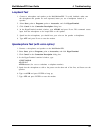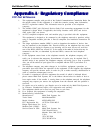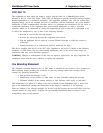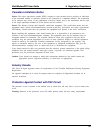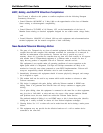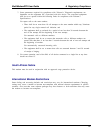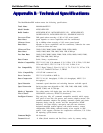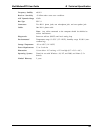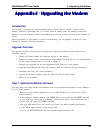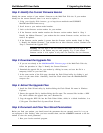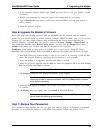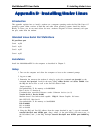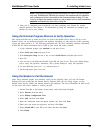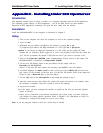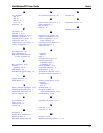
E Installing Under SCO OpenServer
36
MultiModemZPX User Guide
AppendixAppendix
AppendixAppendix
Appendix
E - Inst E - Inst
E - Inst E - Inst
E - Inst
alal
alal
al
ling Undling Und
ling Undling Und
ling Und
erer
erer
er
SC SC
SC SC
SC
O OpenSerO OpenSer
O OpenSerO OpenSer
O OpenSer
vv
vv
v
erer
erer
er
Introduction
This appendix explains how to install a modem on a computer operating under the SCO OpenServer
5.0.x operating system. Briefly, in SCO OpenServer , you do not need drivers for most modems.
Programs in SCO OpenServer commonly call upon the port, rather than the modem.
Installation
Install the MultiModemZPX in the computer as described in Chapter 2.
Setup
1. Turn on the computer and allow the computer to boot to the command prompt.
2. Log in as root.
3. Determine the port address and IRQ for the modem by typing: hw -r pci
To output the port address and IRQ information to a file, type: hw -r pci>pci.txt
Caution: If you choose to output the information to a file, make sure the output file name
includes the .txt extension. While logged on as “root”, the possibility exists that the system file
“pci” will be overwritten. By default, UNIX does not ask if you want to overwrite a file.
4. Look at the ClassCode: 0x078000 (other communications device) section of the output. The
MultiModemZPX is identified as SubSystemID: 0x0480.
5. Use the first I/O address listed as the port address. In the output, look for:
BaseAddr [x]: I/O NxNNNN
where x is the first I/O base address (not memory) and NxNNN is the I/O address.
6. Use Serial Manager (or mkdev serial) to add a serial port. Choose IBM Com X for the new
port, where X is the number of the new port. Use the first I/O address listed in the output file
created in step 3 (BaseAddr [x]:) as the port address.
7. Use the IRQ listed in the InterruptLine of the output file created in step 3.
8. Once the serial port has been added, the system will require the kernal to be relinked. After
the relinking is complete, restart the system to activate the changes.
9. Log back on as root.
10.At this point, you may configure the modem as needed on the new port and add required
entries to Devices.
11.Once you’ve completed your hardware installation and system setup, you must configure
your modem for country-specific operation. Refer to Chapter 2 for information on using AT
commands to configure the modem for use in your country.
Note: If you are using the modem to dial out, a dialer may be needed.



